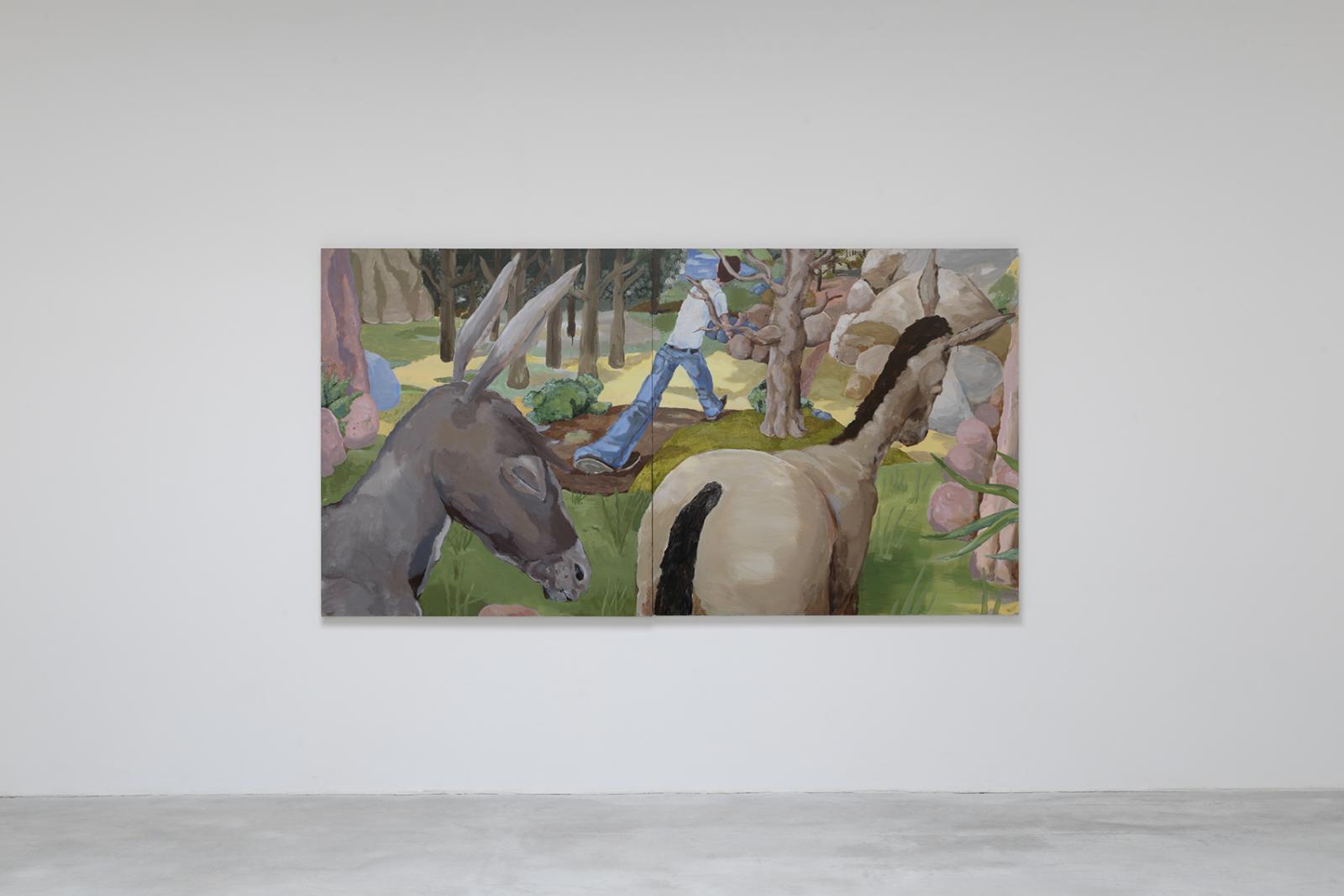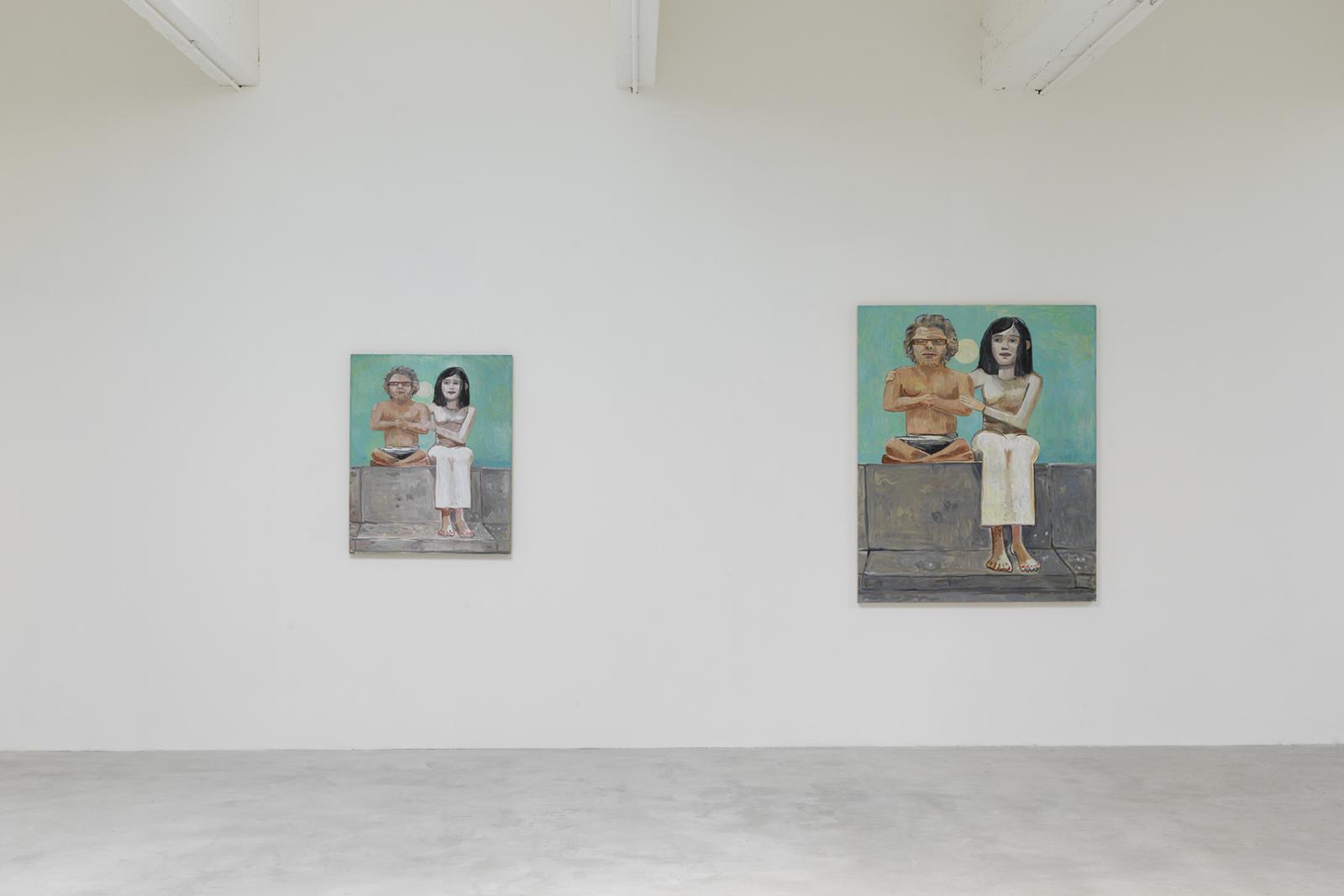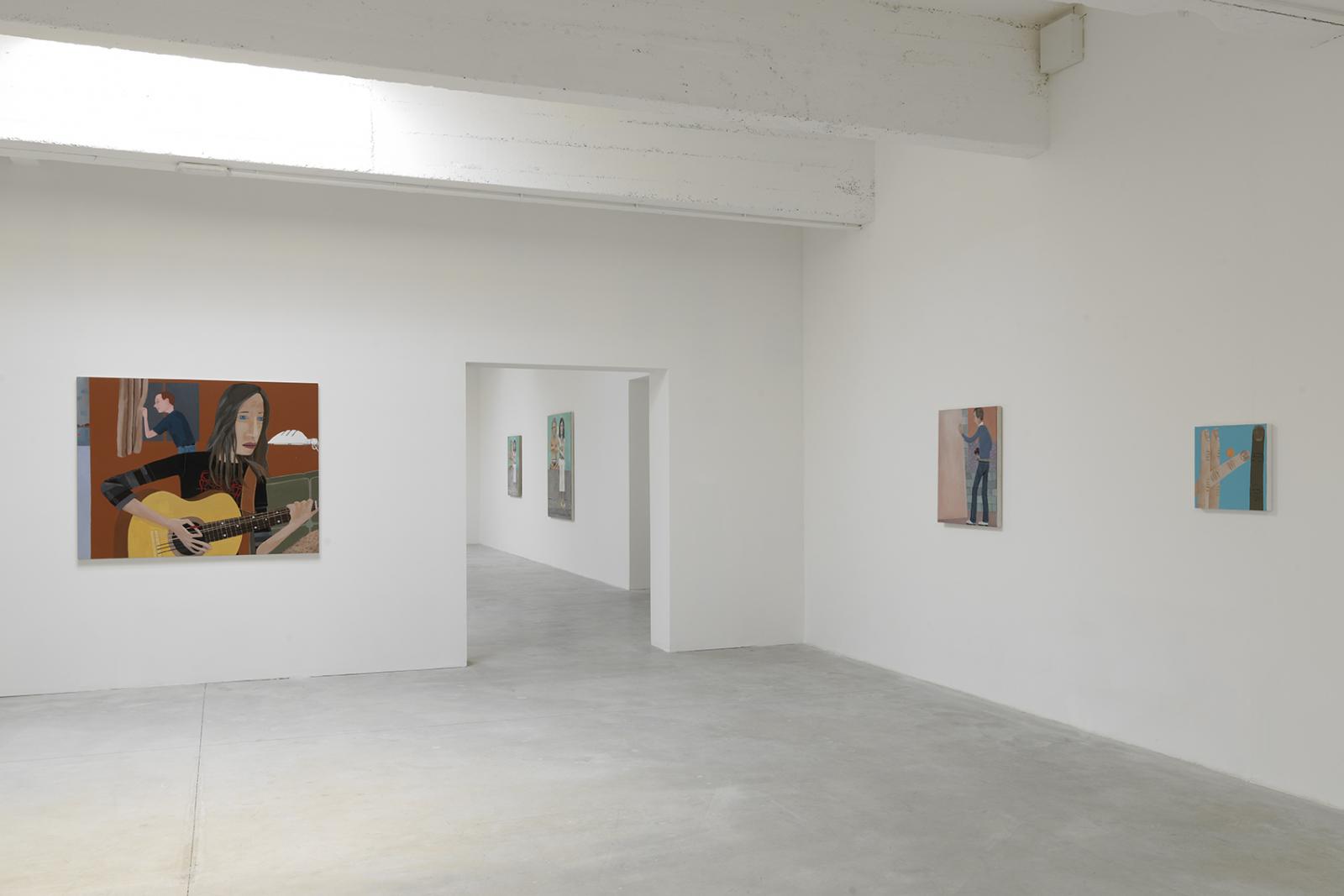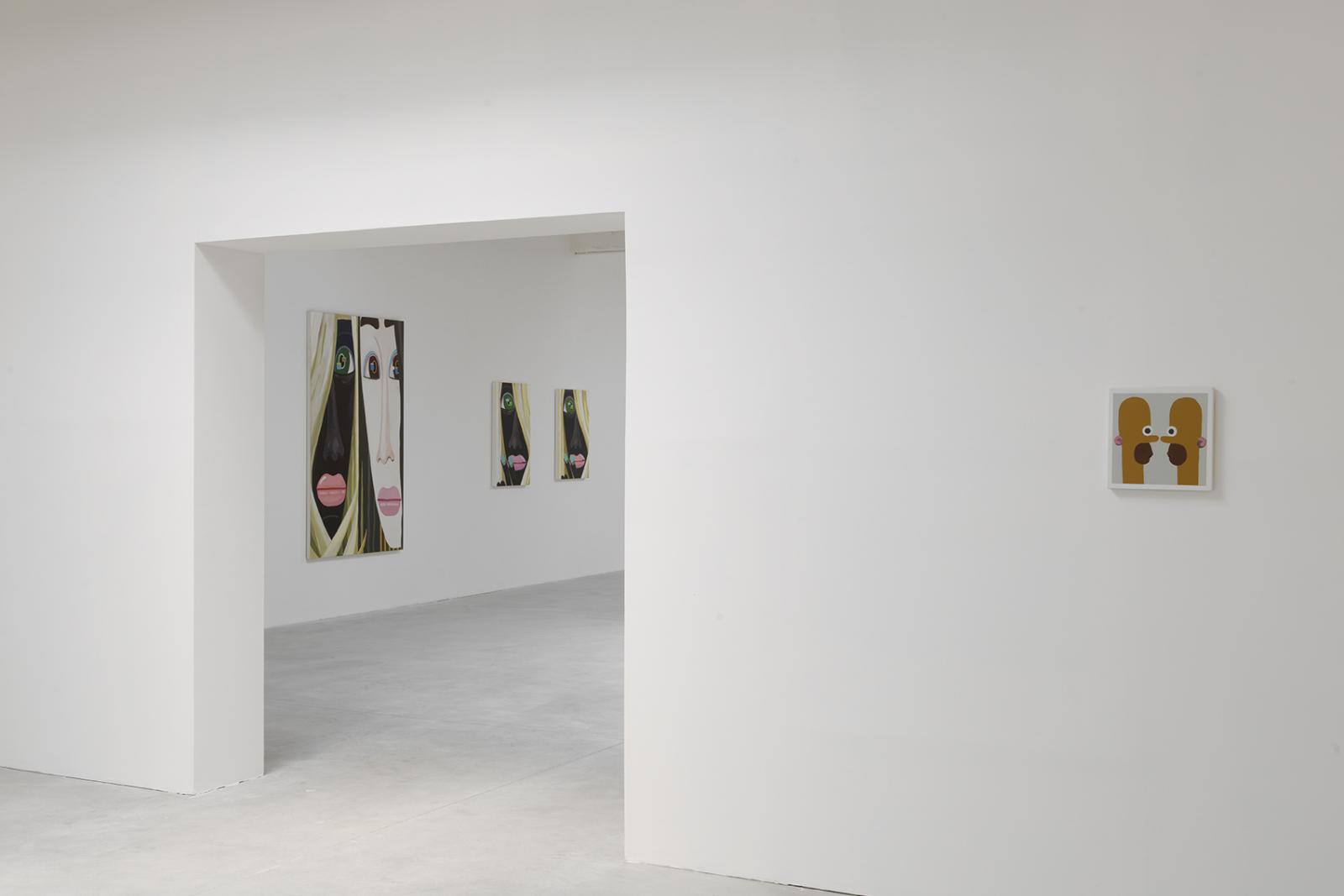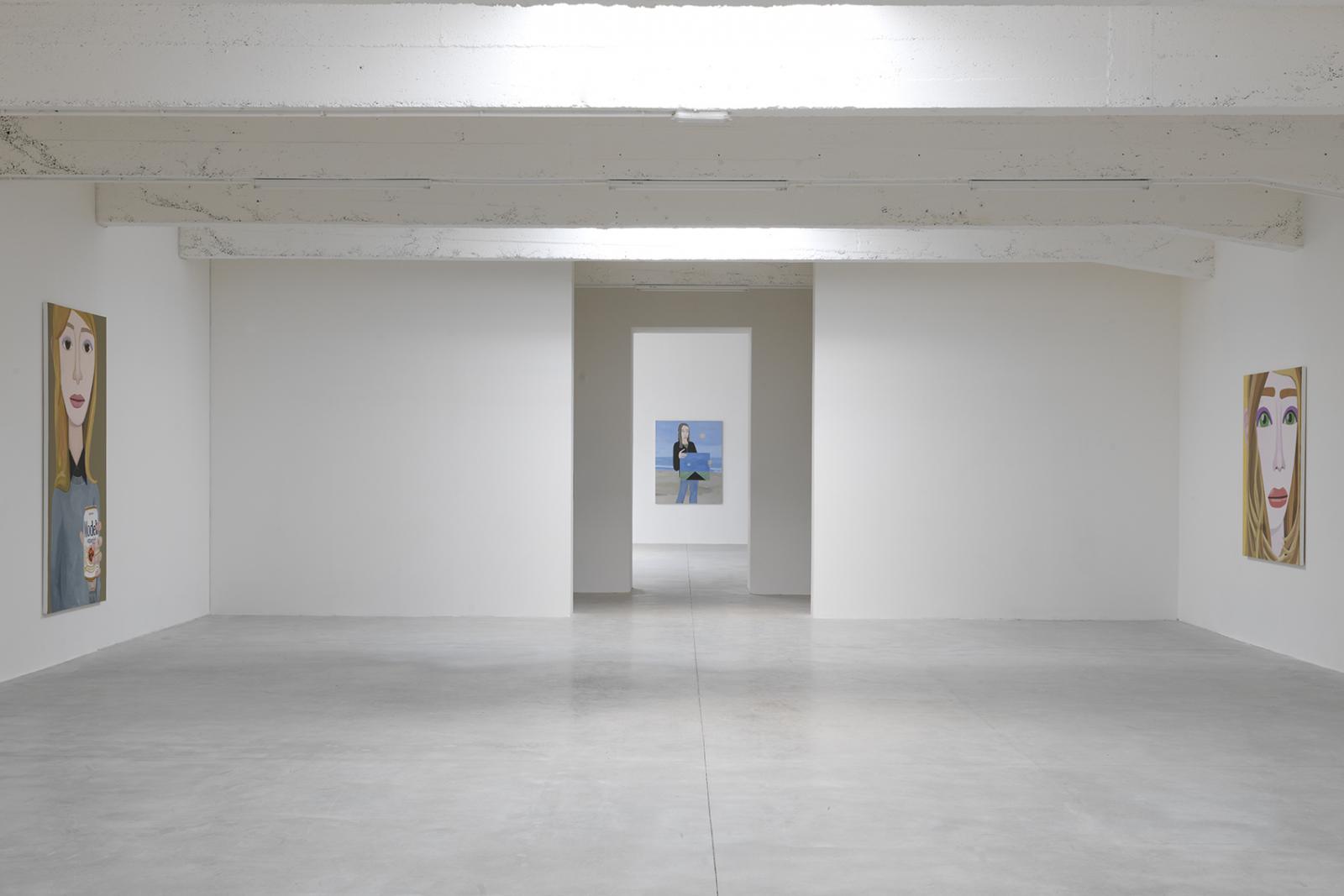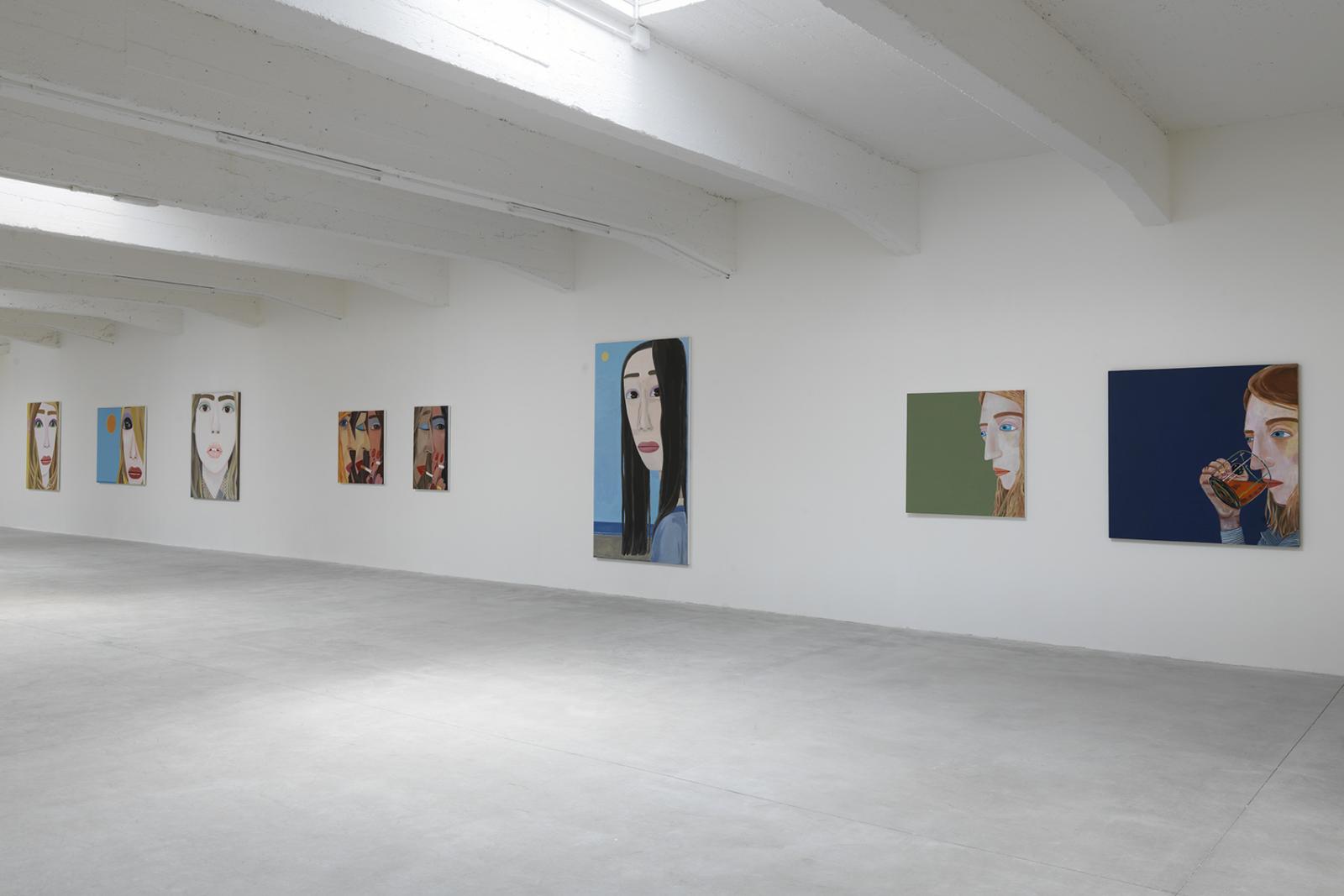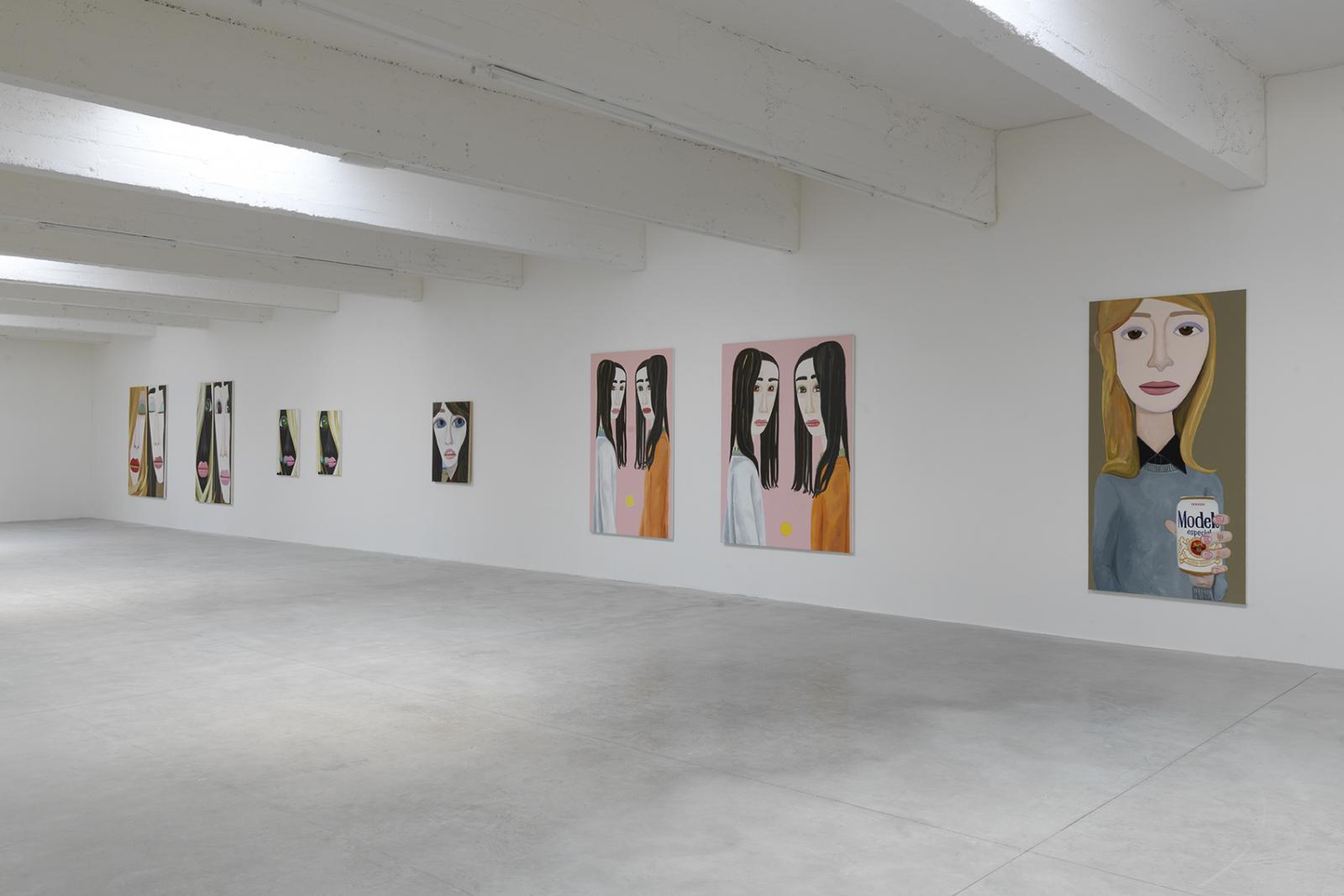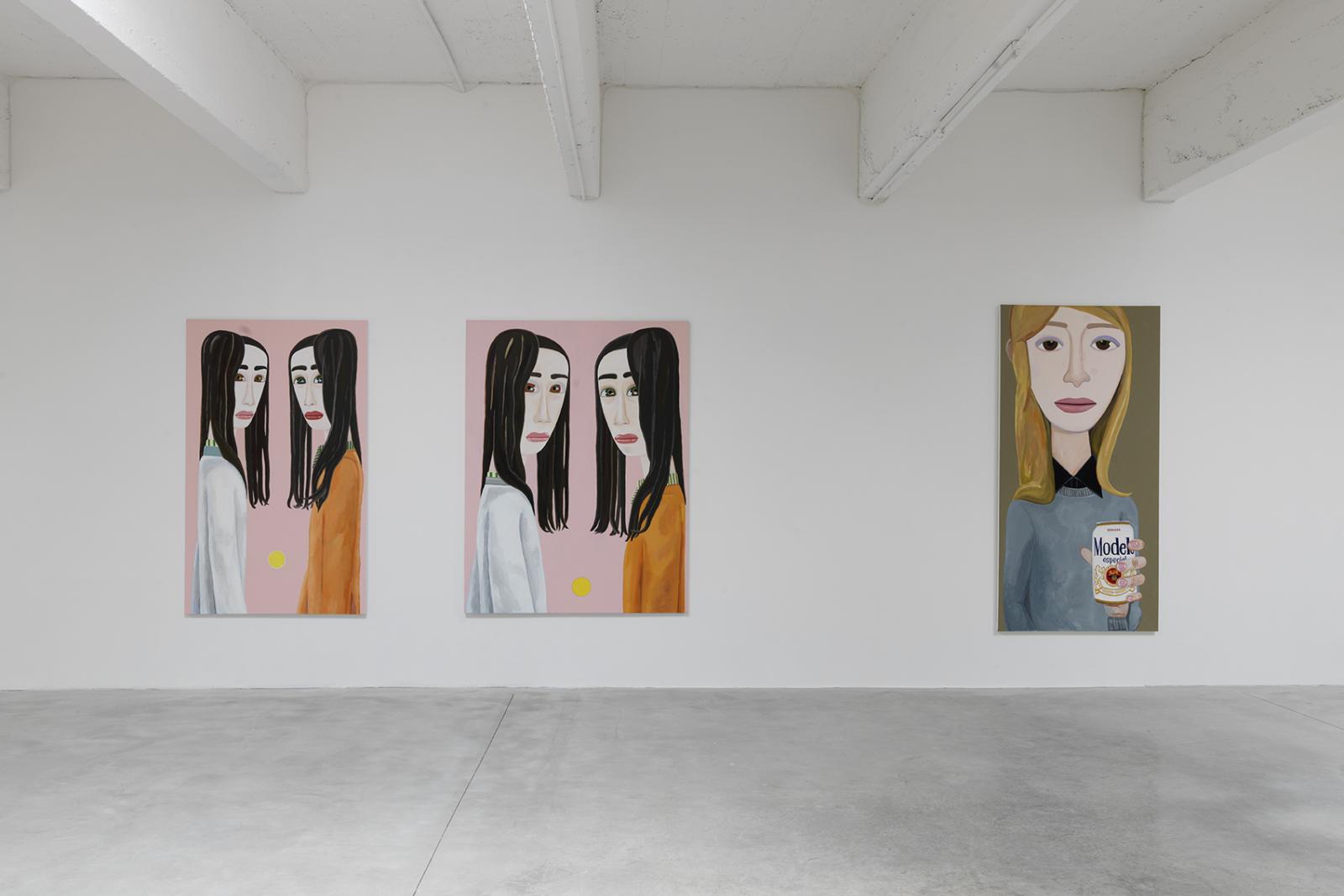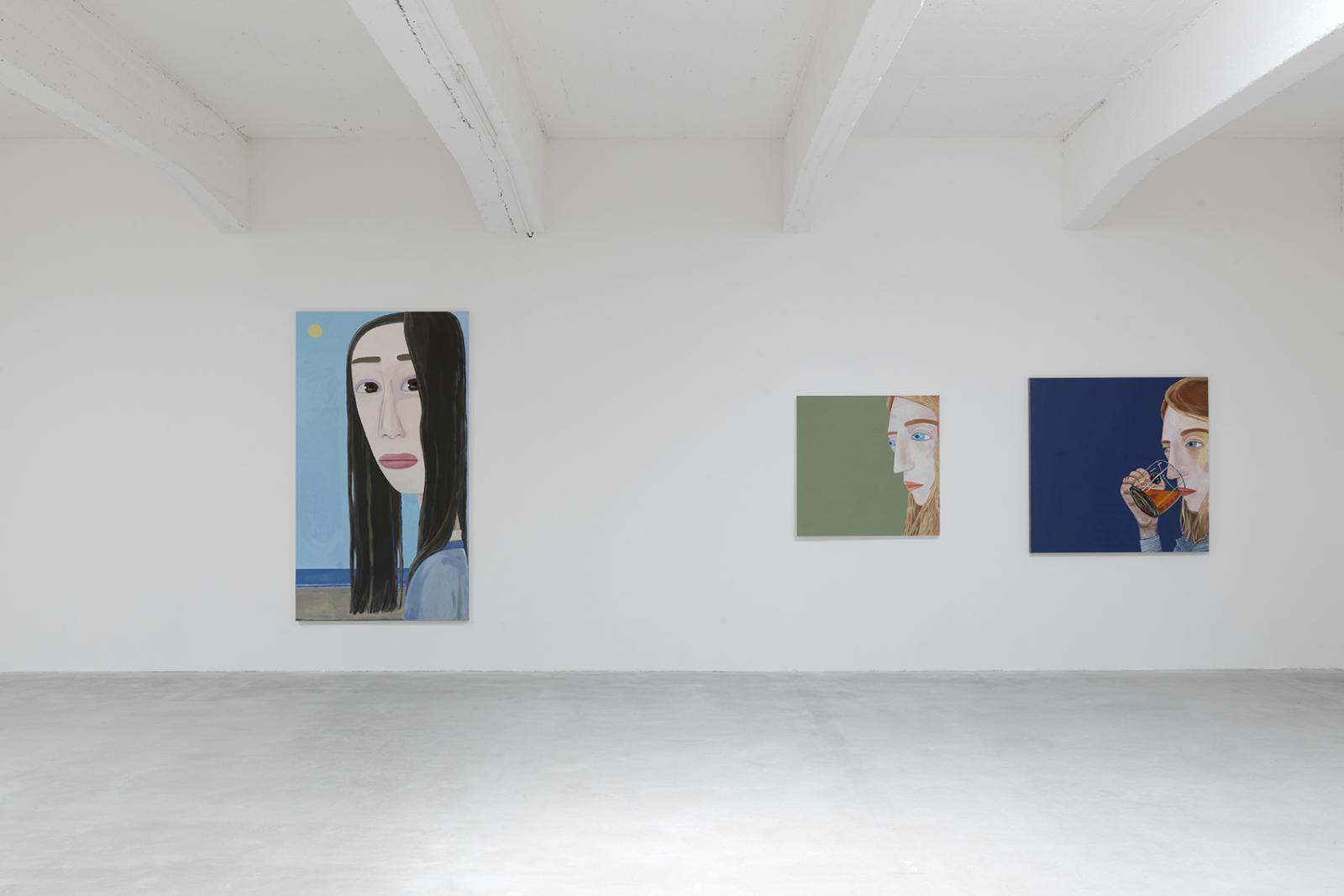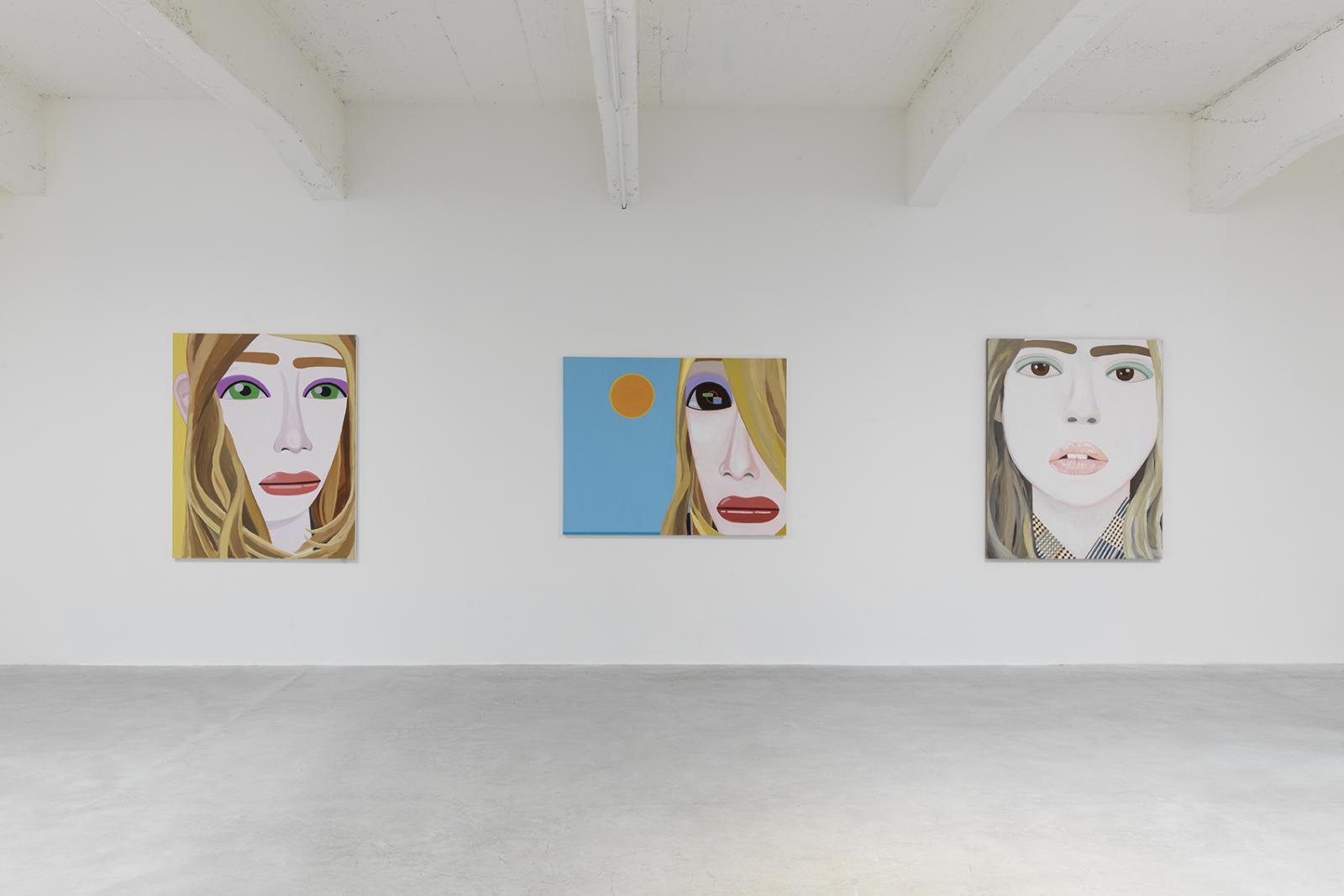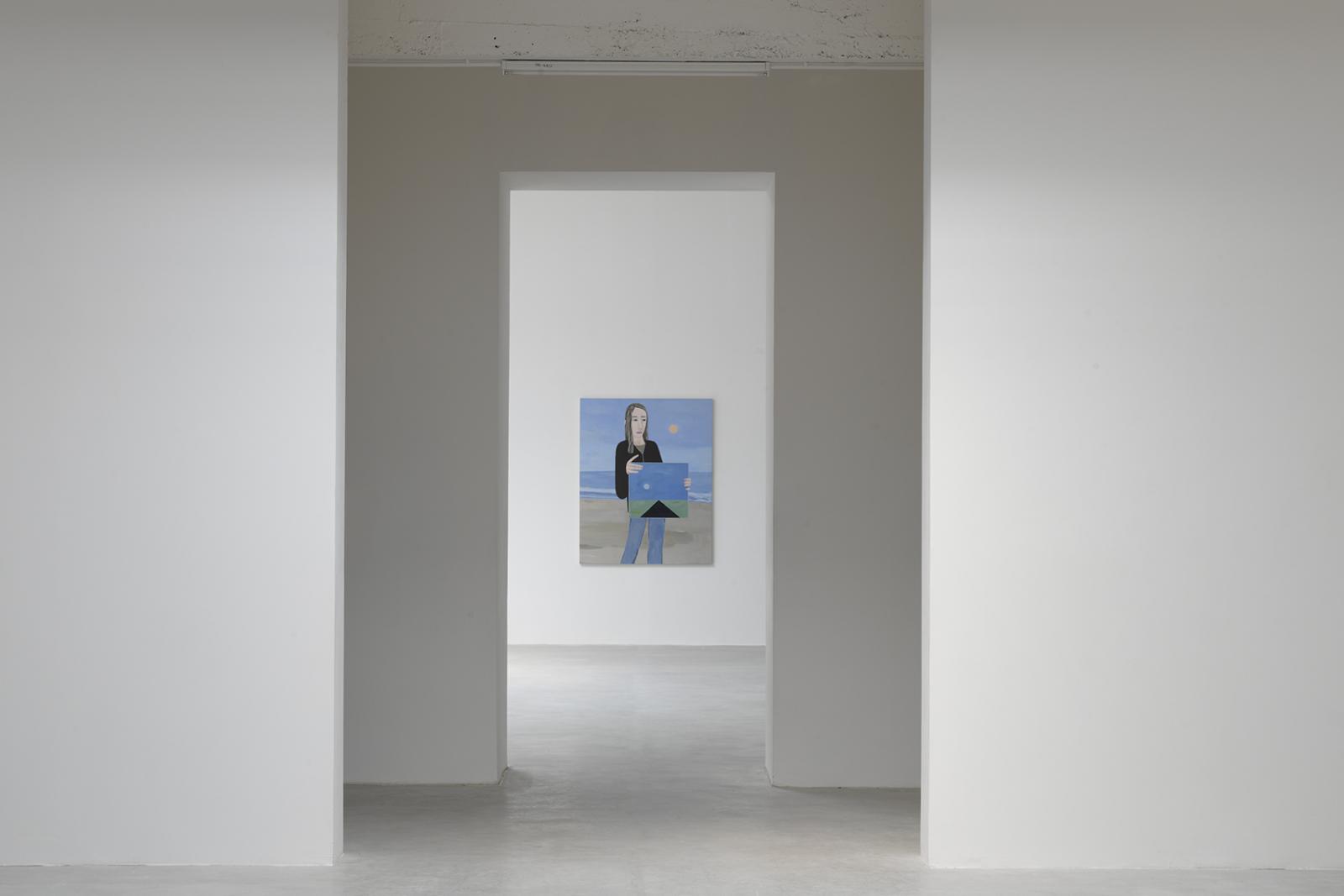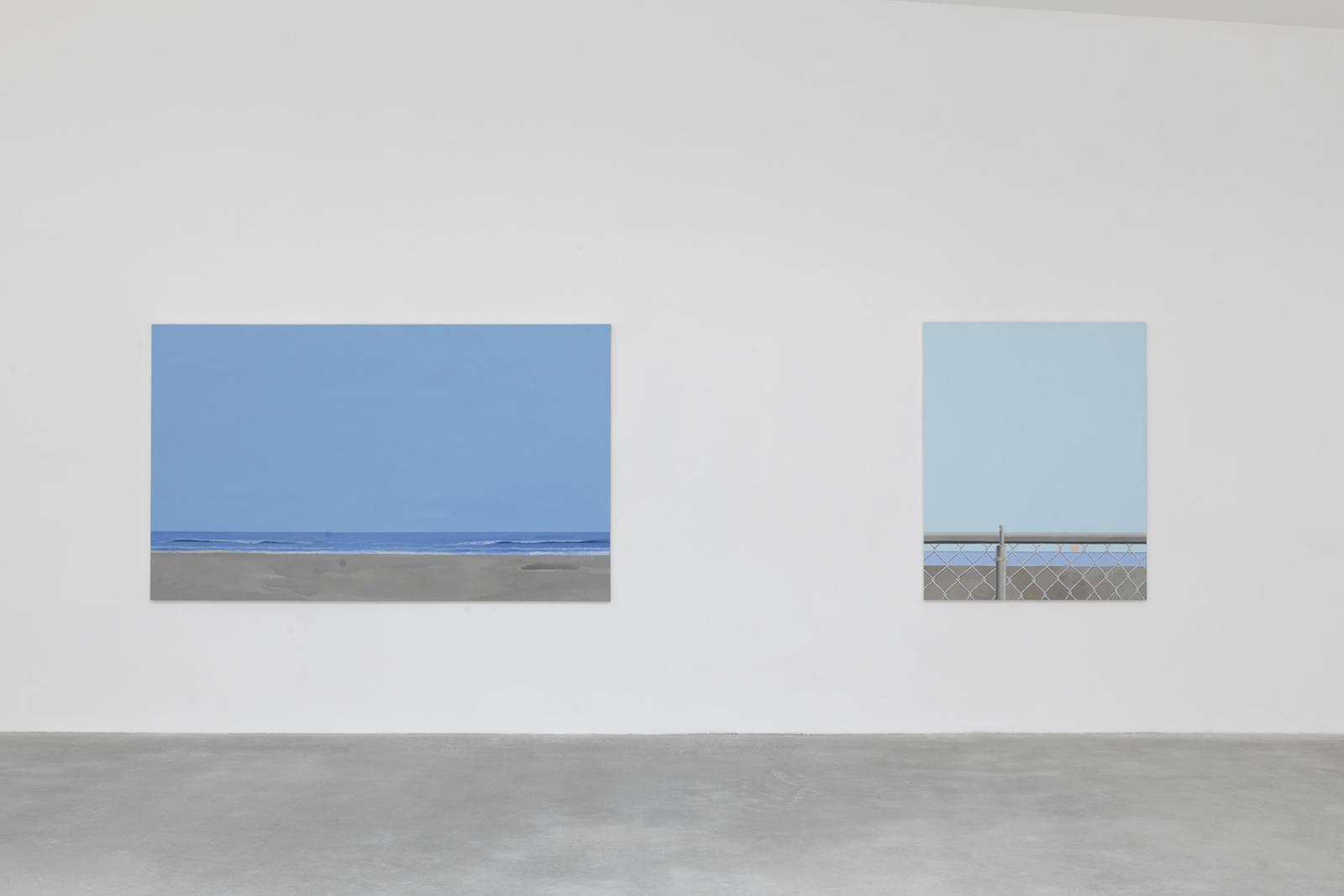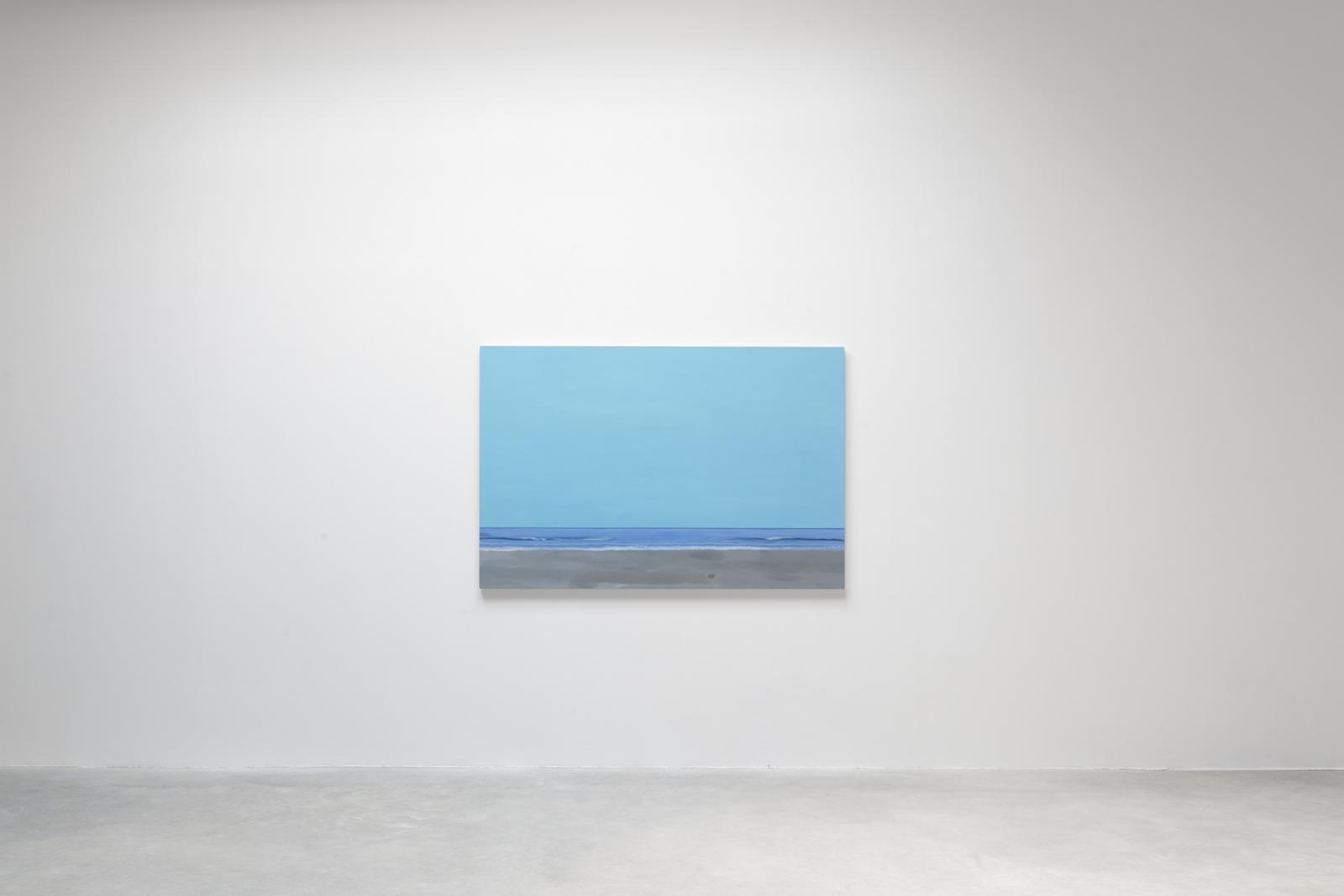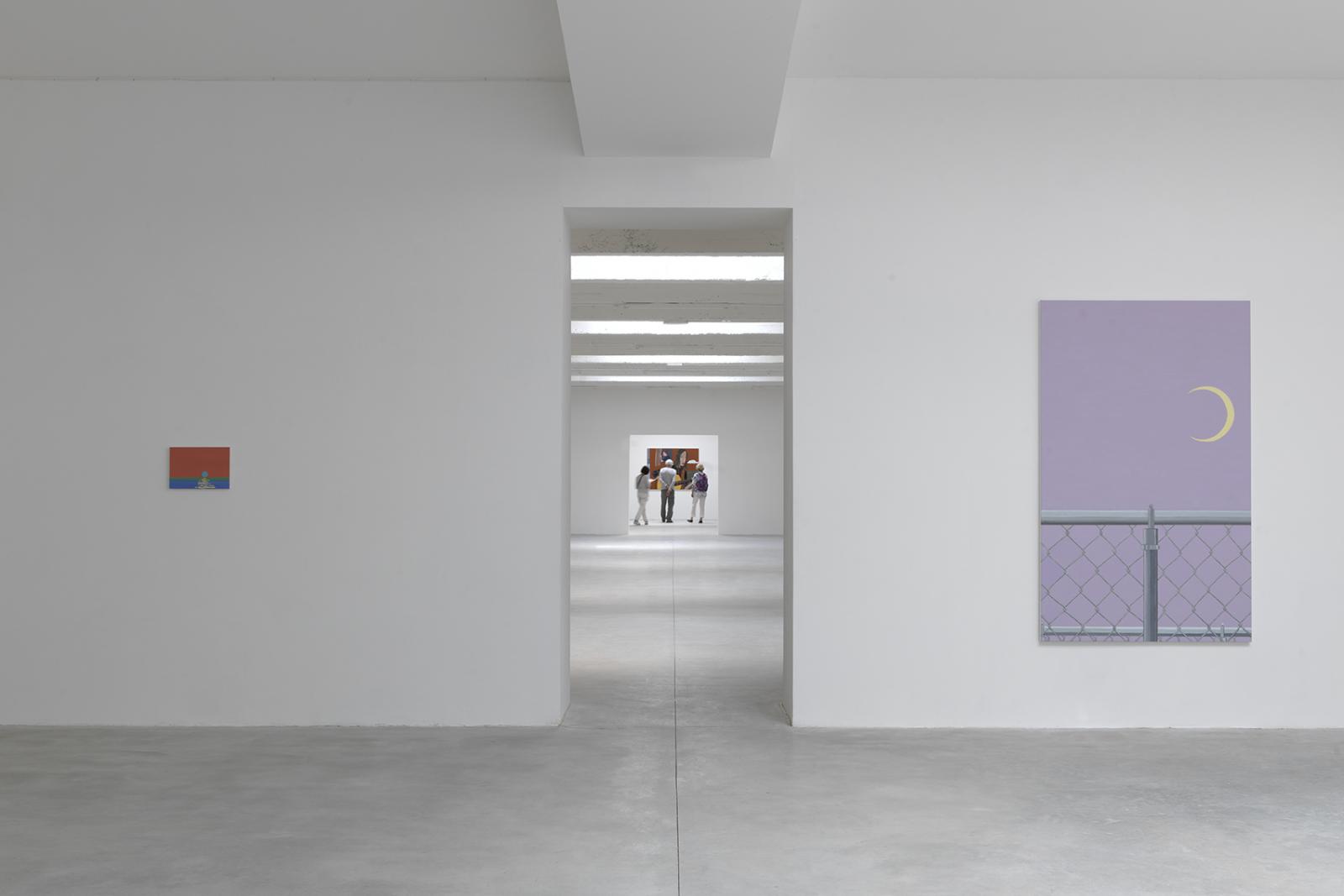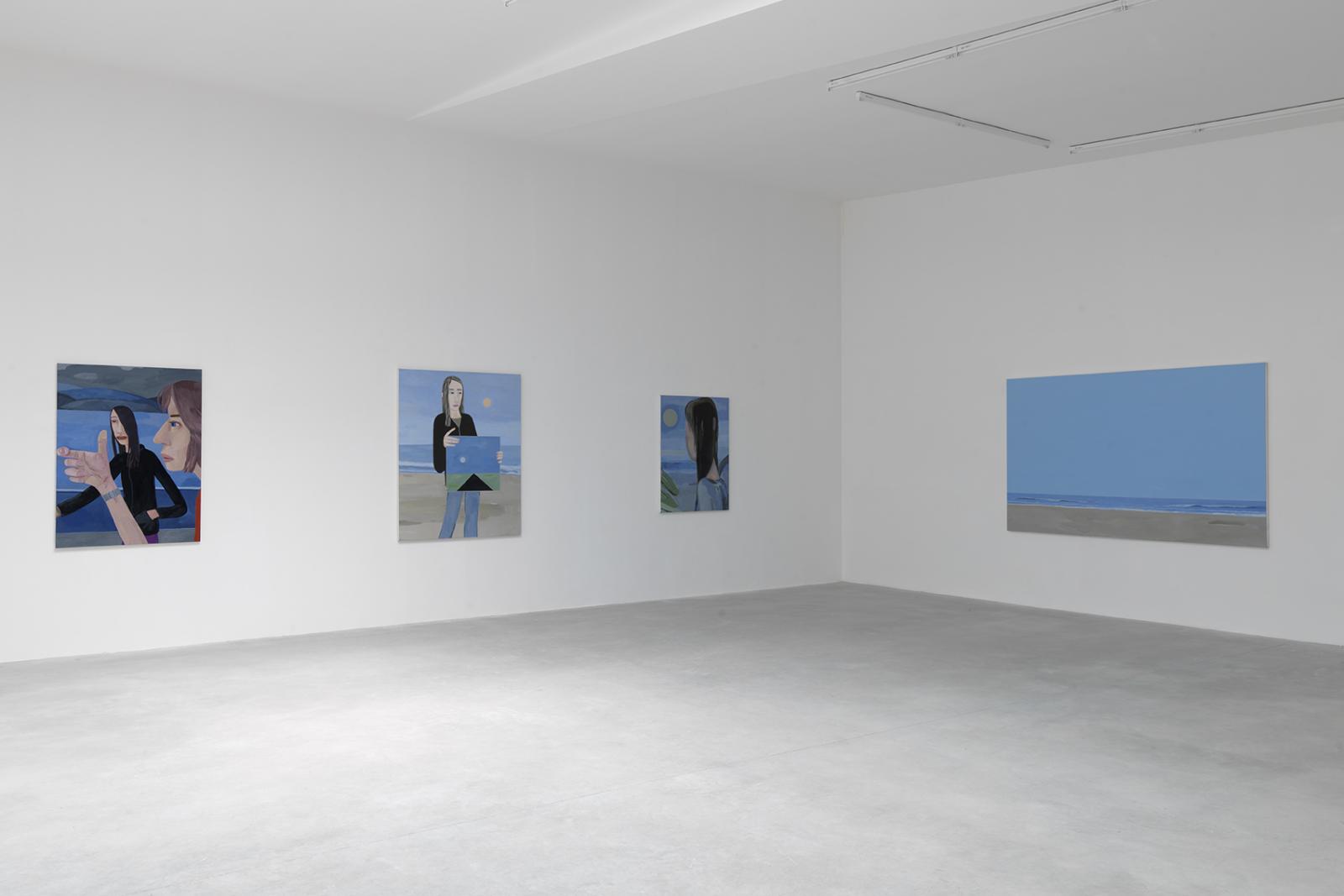Brian Calvin
End of Messages
Born in 1969 in Visalia, Californie, lives in Los Angeles.
The exhibition End of Messages was featured at MuZEE d'Ostende (24 October 2015 - 17 jJanuary 2016.)
At a moment when social-media fatigue may be finally tempering the ebullient narcissism of practically a decade of “status updates,” Brian Calvin’s new works crystallize the inevitable malaise of an acutely self- aware population. His clever and luminous paintings — rendered in the Day-Glo colors of overexposed photographs — depict hyperexposed pretty young things casually mugging for an unseen observer, their faces flattened (visually and figuratively) with the stylized ennui of Modigliani’s oblong portraits. (...)
Emotionally distant and elusively cool, Calvin’s characters convey the banality of selfie culture, and, like selfies, they evade any narrative arc. A California-raised artist, Calvin is occasionally compared to David Hockney, whose colors and subject matter equally evoke the ominously easy life of a sun-bleached suburbia, and to the New Yorker Alex Katz, whose graphic, flat compositions are visual siblings of Calvin’s, but whose paintings tend to suggest backstories and aftermath. Calvin takes a more existential approach to portraiture, treating the human face or body as a self- contained landscape, and in these new pictures he has both tightened and expanded his focus. Where his earlier works tend to portray the awkwardness of casual interactions between people, these breviloquent scenes close in on an epidemic of self-awareness : the objective filter of a close-up may magnify the physical, but it also protectively hides the soul.
—Anne Prentnieks, Artforum, September 2014
